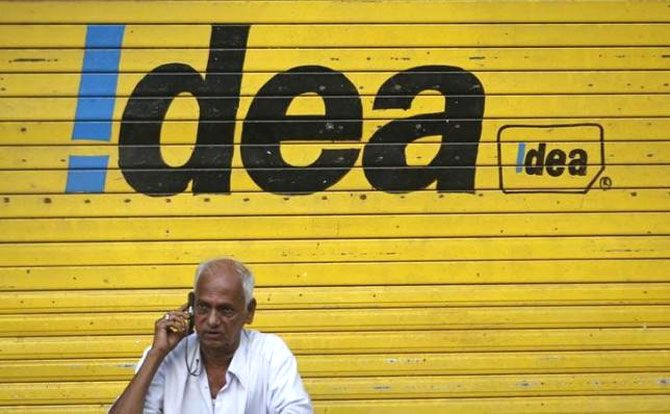T N Ninan lists a few David-Goliath encounters in the Indian markets, all of which make life interesting, though difficult if you are an investor looking for the next multi-bagger. But then, India has never been a country of easy choices.

Khan Market is well known as New Delhi’s toniest shopping destination. Upscale outlets selling premium brands rub shoulders with pricey patisseries like L’Opera, where a loaf of German-style pumpernickel rye bread can set you back a few hundred rupees. At one end of the market, there is the scented Goodearth store, selling designer household goods over two floors, with a restaurant on the top floor that has more foreign diners than Indian.
At the other end of the market is an unexpected new marquee, selling … motorcycles. Actually biking accessories, leather jackets and other merchandise that add to what has been turned into the country’s hottest motorcycle brand: Royal Enfield. It’s the unlikeliest brand in a market whose parking spaces are crowded with luxury German four-wheelers.
Enfield used to be a sorry hangover with pre-World War technology until Siddhartha Lal took charge and re-modelled it into a premium product with retro appeal. As sales have soared to unimagined heights, Lal’s company, Eicher Motors, has seen its stock go where SpaceX wants to: the stratosphere. The company used to be an unpretentious tractor and truck manufacturer.
Then it sold its tractor business, tossed its truck business into a joint venture with Volvo being the minority partner, and focused on tiny Enfield — whose macho models cost as much as a car in the resale market, but have become the Indian bikes of choice for those who secretly aspire to a Ducati or an Indian Chief.

Lal has recently shifted base to London in order to take the company global. The stock price has soared in five years from Rs 1,190 to Rs 16,184. The current price is a good 25 per cent below its peak last summer, which is when Eicher briefly achieved the unthinkable: overtake the volume leader, Hero Motorcorp, in market value.
David vs Goliath: that’s the Eicher story, and it could be the theme of 2015, and perhaps of the two or three years before that. In industry segment after segment, the giants have been humbled in performance by smaller challengers. While market leaders more often than not have destroyed shareholder value, the challengers have created enormous stock market wealth — for their promoters and other investors. This is a world away from the start-up story that has gotten overblown in recent months, with unreal valuations.
It is a story of real brick-and-mortar companies that have done exceptionally well by clocking up real revenues, even as the bigger boys in the game have stumbled or been out-paced. So just in case you thought that cronyism and the lie of the land had made the world a difficult place for the challengers, think again. The smaller guys are winning.

Take Idea Cellular. Not so long ago, it was one of the also-rans in a hot new mobile telecom industry, muddle-headed even as its big-name shareholders (Tata and Birla) bickered over its future. Eventually, Tata sold out and Birla took charge; in the years since, it has outpaced the other also-rans in the industry (Reliance Communications and Tata Teleservices), and closed the gap with the industry leaders.
Even better, it has managed this without piling up debt that companies like Reliance Communications and Bharti have. And so, in the last five years, while the market leader Bharti Airtel’s share price has lost ground, Idea’s stock value has nearly doubled. The company’s explanation: it just did business sensibly without losing its head.

Even in a less turbulent sector like consumer goods, where all the leading players have recorded growth in an expanding market, it is still David vs Goliath. The Bengaluru-based Britannia Industries was under pressure because the cigarette giant ITC had moved into Britannia’s core business of biscuits, even as rival Parle Products was chipping away at market share. Under a new chief executive, hired from Pepsico, Britannia has now shown the others where they get off.
In four years to March 2015, post-tax profits have multiplied five-fold, even as the stock price has climbed more than seven-fold in five years, from Rs 400 to Rs 2,910. Neither ITC nor Hindustan Unilever, the two consumer goods/food products behemoths, has been able to match that performance.

This script, of medium-sized companies doing better than industry leaders, is no secret on the stock market, where the buzz these last couple of years has been about mid-cap stocks rather than the 30 or 50 leading scrips that make the main market indices: the Sensex and the Nifty 50. If you look at the index stocks, many of them have, in fact, done quite poorly, underlining the point that quite a few Goliaths have under-performed.
Over the last five years, the country’s largest company, Reliance Industries, has seen its share price fall from Rs 1,048 to Rs 1,001, and Larsen & Toubro has dropped from Rs 1,304 to Rs 1,295, while ICICI Bank has seen its share price move up very modestly, from Rs 226 to Rs 258 (not enough to beat returns in the debt market).
The public sector giants have done poorly too: the National Thermal Power Corporation has lost 30 per cent of its value over five years, while Bharat Heavy Electricals (once a company to look up to) has destroyed more than 60 per cent of its shareholder wealth. The government-owned oil companies have seen their fortunes fluctuate with the ups and downs of the international oil market; upstream producer Oil and Natural Gas Corporation has suffered as oil prices have fallen, while Indian Oil Corporation has gained relatively modestly as a downstream marketer.
Taken together, their performance is nothing to write home about. As for the government-owned banks, the storyline follows what is now a familiar pattern. State Bank of India, the best of them and the undisputed behemoth of Indian banking, has seen its stock price fall over five years from Rs 275 to Rs 229.

What about the private sector’s headlong run into infrastructure sectors like power generation? As you would expect, it has proved to be a cautionary tale. Over five years, Reliance Power has lost two-thirds of its value, while the loss for Tata Power is close to half, and for Adani Power nearly three-fourths. This is destruction of shareholder value on a jaw-dropping scale (remember how Reliance Power set the market alight with its public issue exactly eight years ago?). The big construction companies — like DLF — tell the same story of value destruction over five years, while smaller developers like Godrej Properties and Sobha have either improved value or held steady on their share price.
The really worrying fact from the perspective of investors is that even stellar sectors that have been growth markets till the other day now have shadows falling across their path. In the shorter time frame of the last calendar year, such outperformers as telecom, pharmaceuticals and software services have suffered hiccups or a loss of tempo, even as no new star sectors have emerged to take their place in investors’ fancy.
As drug company after drug company has faced inspectors from the US drug administration, and been found wanting, the stock price of the biggest in the pack (Sun Pharmaceuticals) has taken a massive beating in recent months — though over a five-year period the price has trebled. Tata Consultancy Services, the leader in the software services game, has clearly lost steam, just as Infosys did before it.

And telecom has become a troubled sector, as over-capitalisation and heavy borrowing by the leading players raise questions about what returns investors can expect. Reliance Jio is said to have invested well over Rs 100,000 crore (Rs 1,000 billion) before it launched its services on a trial basis earlier this week.
But even in these once stellar sectors, it is the mid-sized player who has shown others the paces: HCL Technologies has continued to outperform, even as its stock price has quadrupled over five years, a period in which the Infosys stock has gained just 30 per cent.
Aurobindo Pharma, one of the smaller players in the bulk and generic drugs business, has outdone Sun with a more than six-fold boost to its share price. In aviation, Jet and Indigo have swapped roles as Goliath and David; yesterday’s No. 1 has a market capitalisation today that is just one-sixth of Indigo. It’s no different in the media space.
News market leaders in print and television, like HT Media and Network 18, have destroyed half or more of shareholder wealth in the last five years, while TV Today — a steady performer but not fancied until recently - has enjoyed a more than trebling of the value of its stock.
So what is one to glean from all this? Quite a few things actually. The Indian market is capable of surprises - as in so many David-Goliath encounters. Challengers can win by simply sticking to the basics - as Indigo has done. If you cut corners, as some of the pharmaceutical companies seem to have, eventually you will get found out - or find yourself at the centre of controversy. When the big boys think they have it all sewn up, someone can spring out at them from a niche corner - like Eicher. Or when they think they are ready for the big leap, they stumble - and finally, when you run with the herd (think power projects), you might be headed for the cliff. All of which makes life interesting, though difficult if you are an investor looking for the next multi-bagger. But then, India has never been a country of easy choices.






